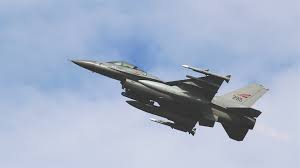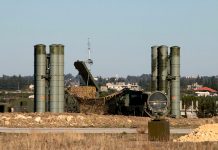
Chengdu Aerospace Corporation (CAC) is reportedly testing a twin-seat variant of the J-20, now powered by the long-awaited WS-15 engine. This information comes from Chinese military observers, who have shared videos and insights on X. One analyst, @eastwind6699, claims that the aircraft in the footage is using the WS-15, a highly anticipated upgrade that has been in development for years. Another expert, @RupprechtDeino, speculates that this jet is the twin-seat J-20S. If these observations hold, it represents a significant milestone for CAC’s efforts. Successfully integrating the WS-15 into this dual-seat model suggests that the engine program has reached a level of maturity suitable for broader operational trials. The aircraft, still in a yellow primer coat, indicates that it remains a prototype and is not yet ready for active service.
The WS-15 engine is a critical advancement in China’s fighter jet technology, particularly for the J-20 stealth fighter program. This ambitious project aims to close the gap between Chinese and Western aerospace propulsion technologies, potentially positioning the J-20 as a serious competitor to the U.S. Air Force’s fifth-generation aircraft, such as the F-22 and F-35.
The WS-15 is a high-thrust turbofan engine capable of generating 18 to 20 tons of thrust, on par with, or possibly surpassing, the Pratt & Whitney F119 engines powering the F-22. This thrust is essential for enabling the J-20 to supercruise—maintain supersonic speeds without relying on afterburners—thereby enhancing fuel efficiency, extending operational range, and reducing the aircraft’s infrared signature, which makes it more difficult to detect and target.
The engine also plays a crucial role in improving the J-20’s agility, especially in high-speed, high-altitude engagements. Earlier J-20 models were powered by Russian AL-31F engines or the domestic WS-10C, which lacked the necessary thrust-to-weight ratio and efficiency to fully exploit the aircraft’s stealth and aerodynamic design. The WS-15 addresses these limitations, enabling the J-20 to perform more dynamic maneuvers and evade missile systems more effectively.
Beyond performance, the WS-15 is symbolic of China’s broader military ambitions. Developing an indigenous advanced fighter engine is a key goal in China’s efforts to achieve self-reliance in defense technology. The country has long depended on imported Russian engines, but the WS-15, if mass-produced, will eliminate this dependency, streamlining production for the J-20 and other advanced platforms.
Moreover, the WS-15’s successful development could have far-reaching implications for China’s military aviation capabilities. The engine could be adapted for future aircraft, including sixth-generation fighters, strategic bombers, and unmanned combat air vehicles (UCAVs), making it a cornerstone of China’s next-generation airpower.
Developing such an advanced engine, however, presents significant challenges. High-thrust engines like the WS-15 must withstand extreme temperatures and stress, requiring advanced materials and manufacturing techniques to ensure their reliability and durability. Testing setbacks and delays suggest that China is still refining the engine to meet operational standards. Despite this, the recent video showing a WS-15-powered twin-seat J-20S suggests that these challenges are being addressed.
The WS-15 program has faced numerous obstacles over the past decade, including issues with thermal management and material durability. Early prototypes encountered significant failures, such as turbine damage during high-thrust tests. These issues highlighted the difficulty China faced in producing advanced turbine blades capable of withstanding extreme temperatures.
The WS-15 also experienced delays in meeting its performance targets, initially falling short of the required thrust levels for supercruise. To compensate, China used Russian AL-31F engines and the WS-10C in early J-20 models, which lacked the power needed for optimal performance, particularly in high-speed combat scenarios.
Ensuring the engine’s reliability over a full operational lifespan has also been challenging. Earlier tests revealed premature wear and tear, raising concerns about the engine’s long-term durability. These difficulties, combined with challenges in scaling manufacturing processes, have extended the development timeline.
Despite these setbacks, recent reports indicate that the WS-15 is nearing operational readiness, with newer prototypes showing improvements in both thrust and reliability. The successful testing of a twin-seat J-20S with the WS-15 engine suggests that CAC is gaining confidence in the engine’s performance.
The WS-15’s development underscores the immense difficulty of creating a world-class high-thrust jet engine—a challenge even for established aerospace powers like the U.S. and Russia. For China, the setbacks reflect the scale of ambition behind the program. If the WS-15 can overcome the remaining hurdles, it will not only be a major achievement for the J-20 program but also a key element in the future of Chinese airpower.
For China’s military strategists, the WS-15 is more than just an engine; it represents a critical step toward parity, or even superiority, in modern air combat. If successfully integrated, the WS-15 could significantly alter the strategic balance in the Indo-Pacific, providing China with a stealth fighter capable of challenging the dominance of Western air forces.




